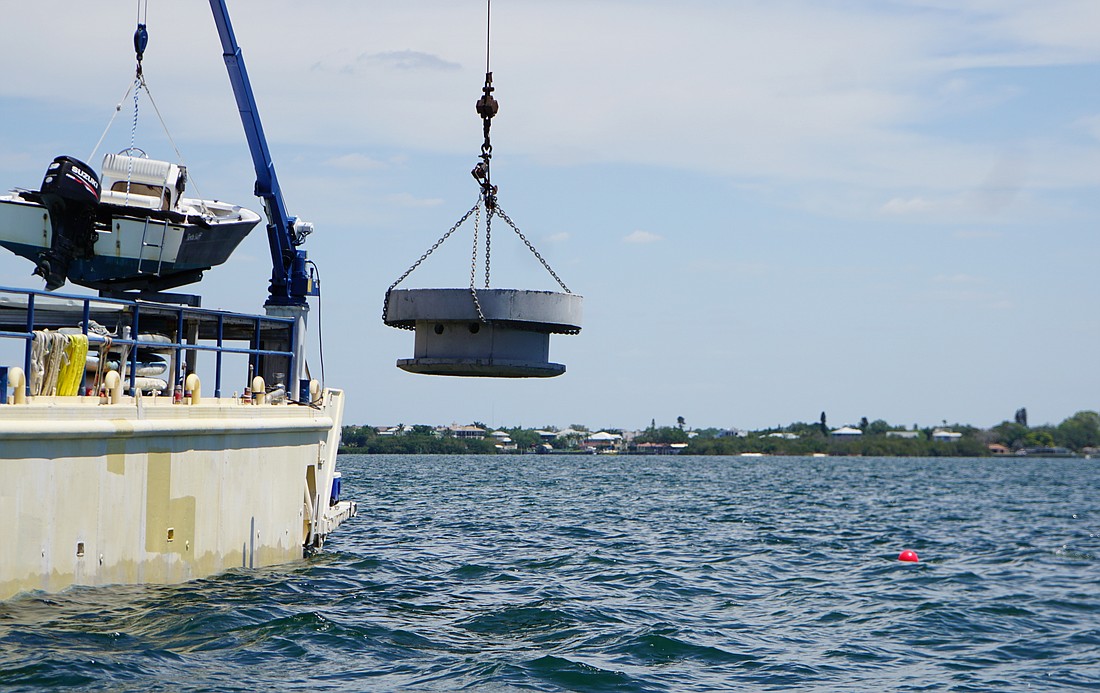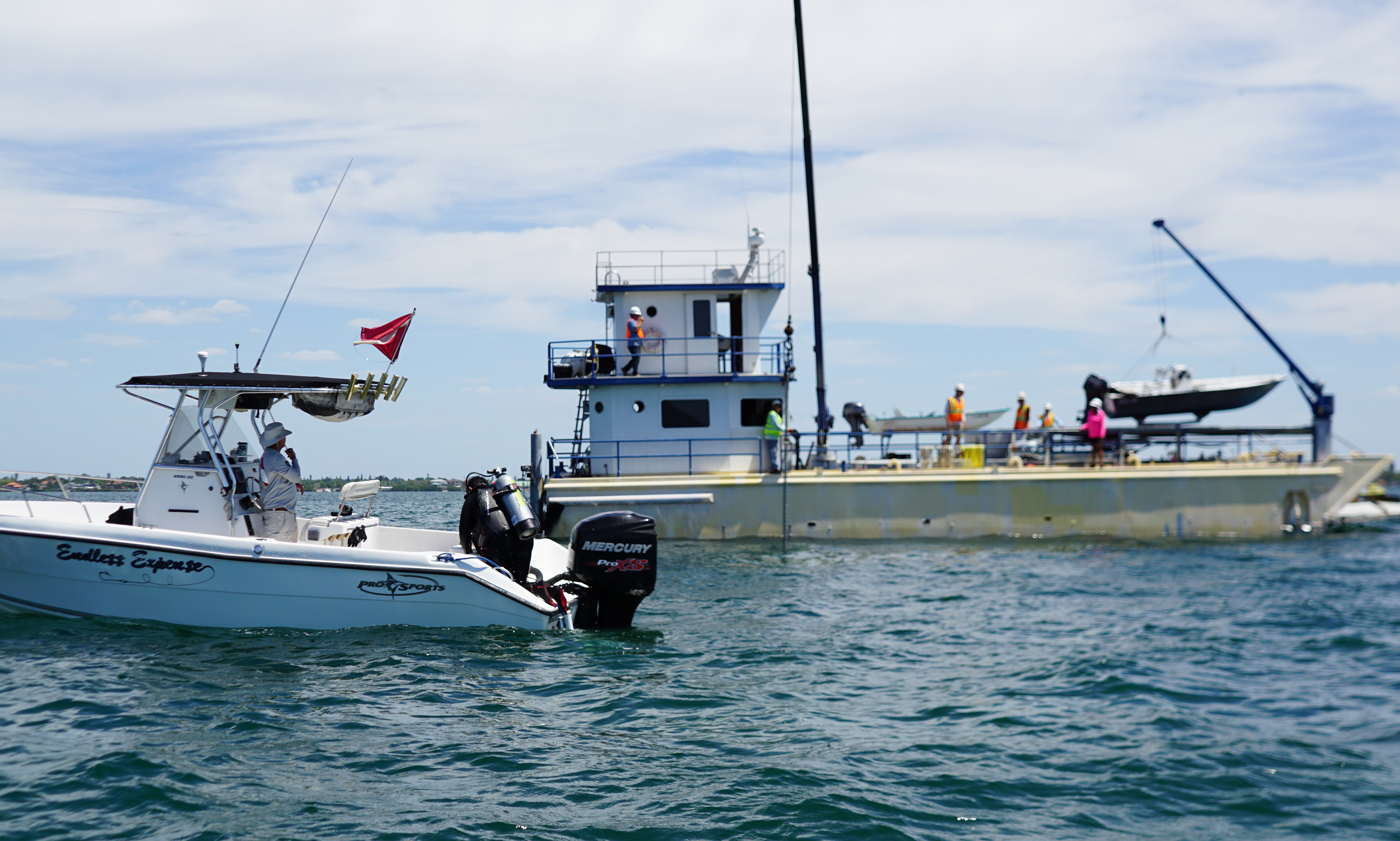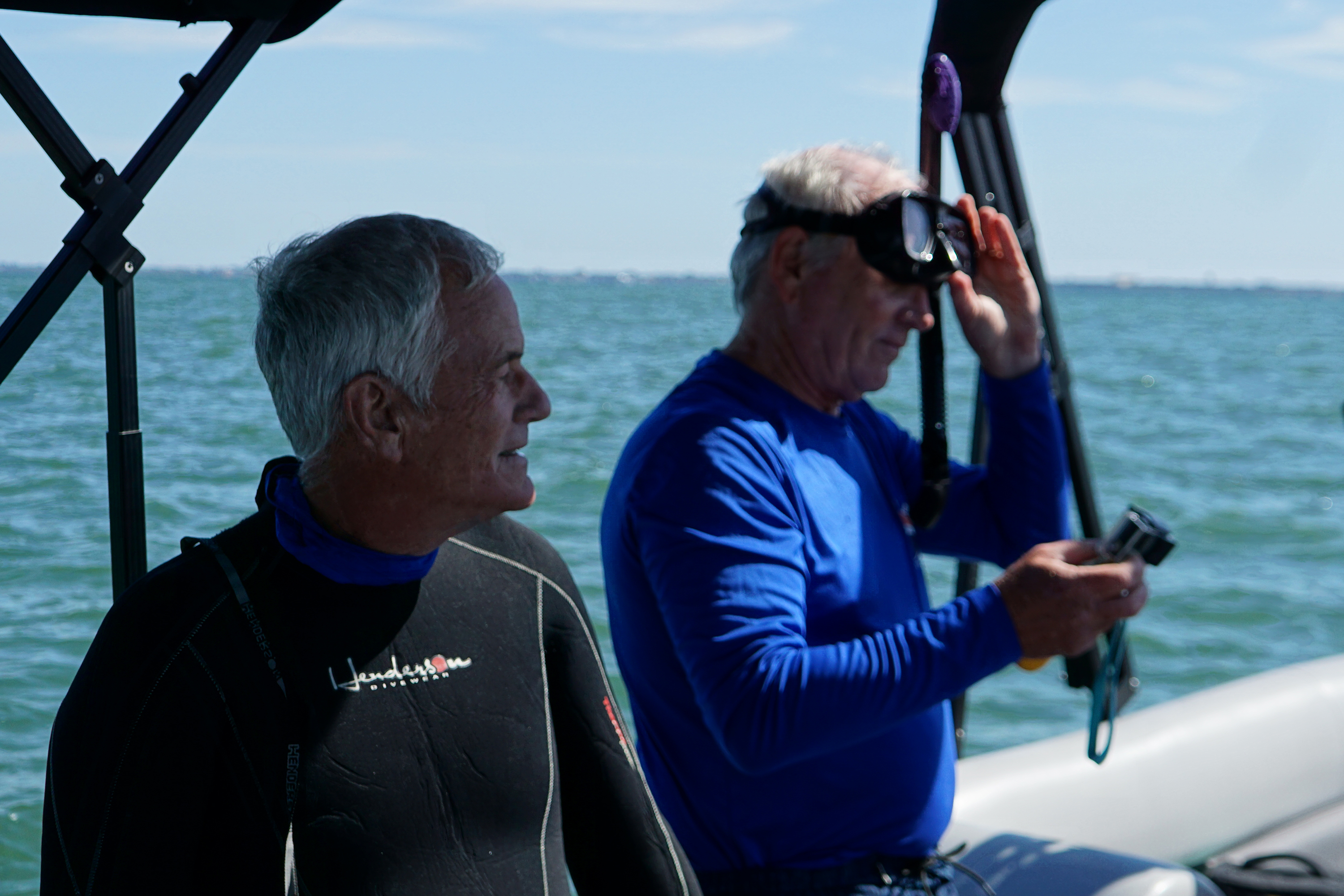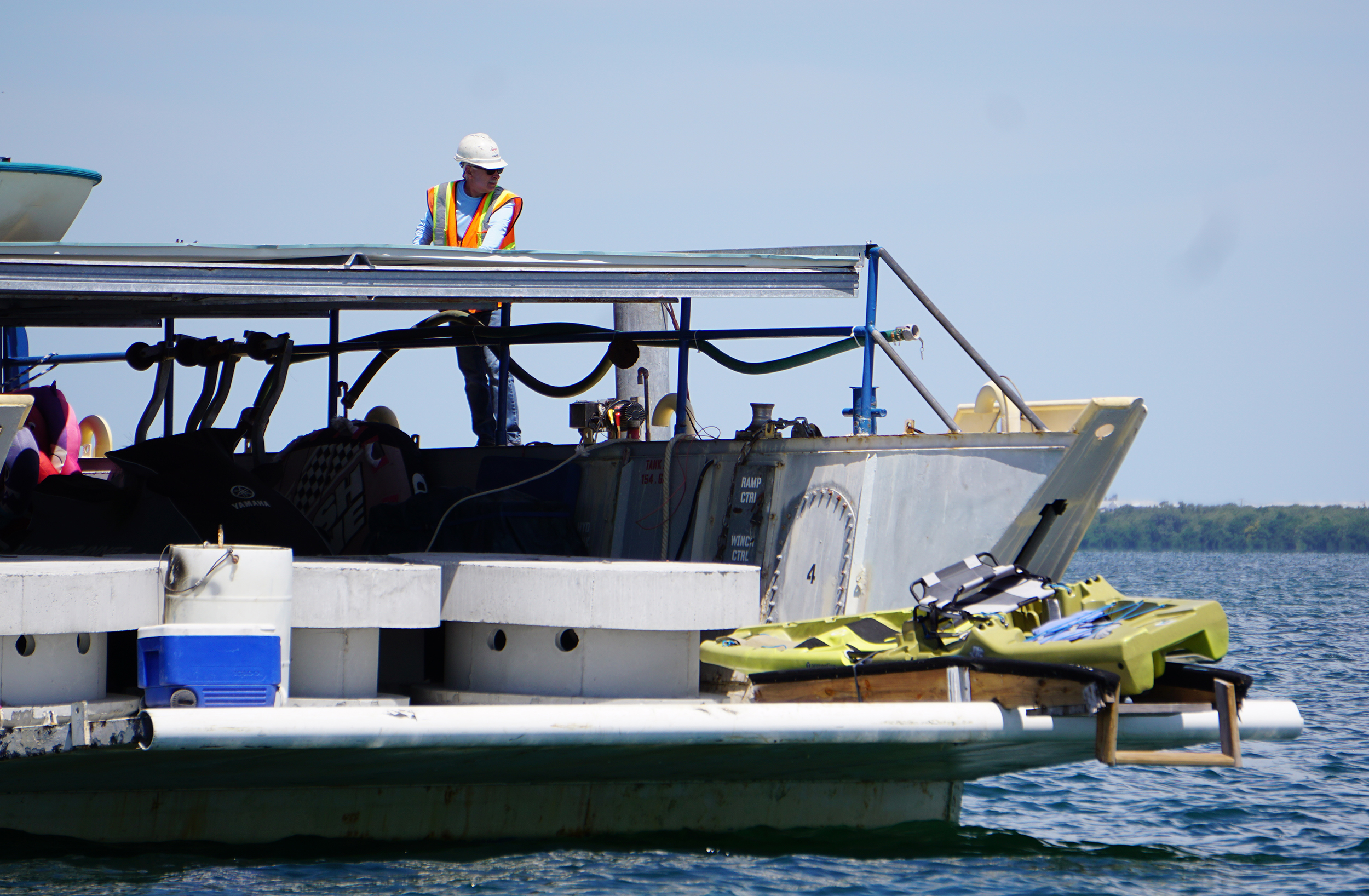- May 4, 2024
-
-
Loading

Loading

The Sarasota Bay Estuary Program recently deployed 24 artificial reefs across six sites in Sarasota Bay, the first project of its kind in about a decade.
The reef modules, called deep-cover modules, are large, concrete structures that are about 4 feet wide. Each site has four modules and will create an underwater ecosystem to support the growth of juvenile grouper, according to SBEP Executive Director Dave Tomasko.
Members of the SBEP went by boat on April 23 to watch the first reefs deployed. Half were set in place the first day, and the remaining dozen would be installed the following day.
Reef Innovations, which has its plant in Sarasota, built the modules for the SBEP.
Money from the Bipartisan Infrastructure Law and the Sarasota Sportsmens Association provided the estuary program with the $150,000 necessary to carry out the project. Donations from the Sarasota Sportsmens Association to SBEP totaled about $50,000.
About $4.5 million of funds from the BIL allowed the SBEP to embark on a series of habitat restoration projects — something that was previously not possible within the SBEP’s standard funding. Other projects include the F.I.S.H. Preserve in Cortez and improvements to Bradenton's G.T. Bray Park.

“We came up with the work plan a couple of years ago that said, 'We've got this opportunity to spend $4.5 million from the infrastructure law, and we're not going to spend it on studies and reports. We're going to spend it on restoration projects,'” Tomasko said.
According to Tomasko, some artificial reef projects were completed by Manatee and Sarasota Counties in the past, and the SBEP did similar projects as well.
“It’s not like no one’s ever done this before, but it hasn’t been done in about 10 years,” Tomasko said.
When choosing a type of artificial reef, SBEP took part in a year-long monitoring process to pick the best one.
When Staff Scientist Jay Leverone saw about 40 gag grouper at one reef site with deep cover modules, he knew that was the type to use.

The six sites in Sarasota Bay will be Bayshore North Reef, Whale Key Reef, Bayshore South Reef, Walkers Reef, Harts Reef and Sportsmans Reef. These sites were previously permitted for artificial reefs, Tomasko said, which made the process easier.
The reef sites are also accessible by kayak. Once populated with fish, Tomasko said the hope is that the reef sites will give people the opportunity to experience fishing for grouper without needing a big boat and going offshore.
The four modules at each site will be spaced out, but not too far.
“The idea is to cluster them close enough to each other so that fish can swim from one to another,” Tomasko said. “And the idea also is that we don't want to have these individual reefs scattered so far away that fish can't go from one reef site to another.”
Creating a safe, interconnected habitat for juvenile fish to grow will hopefully help to stock the offshore fisheries.
“Fish have very high mortality and early life history stages,” Tomasko said. “So if you only focus on habitat for the adults, then you're going to miss probably the most important thing, which is the habitat for the younger stages.”

After a couple weeks, there could be marine life like sponges growing on the reefs.
In about a year or two, the reefs will be “soaked,” according to Leverone. That means the artificial reefs will be fully immersed by then, and hopefully creating an underwater community.
Then, fish around the reefs could be tagged with the hope of becoming part of larger monitoring projects related to offshore fishing. That way, SBEP and other organizations can point to artificial reef programs like this as promoting the growth of juvenile fish that later go on to support offshore fisheries.
“The vast majority of the grouper you’re going to eat are not coming from Sarasota Bay, they’re probably coming from offshore,” Tomasko said. “But if you don’t have a Sarasota Bay, then you're not going to be able to have a healthy offshore fishery.”